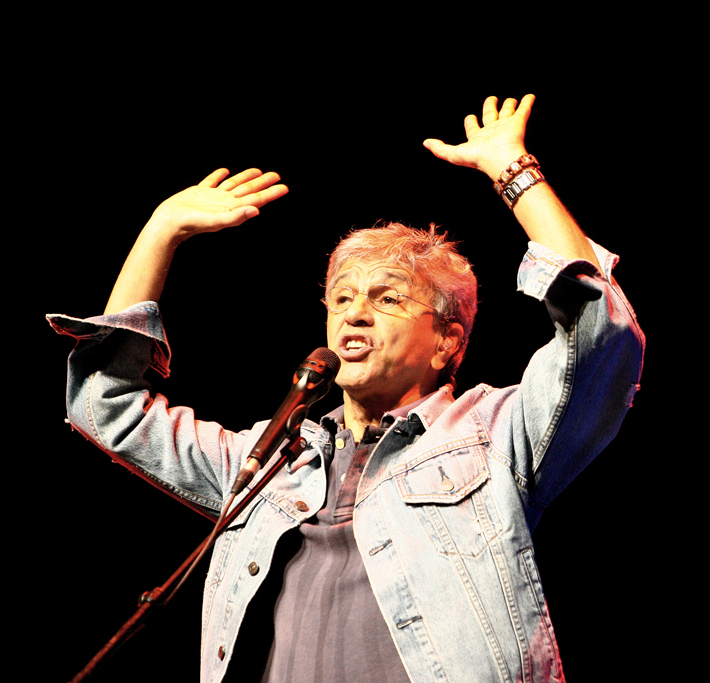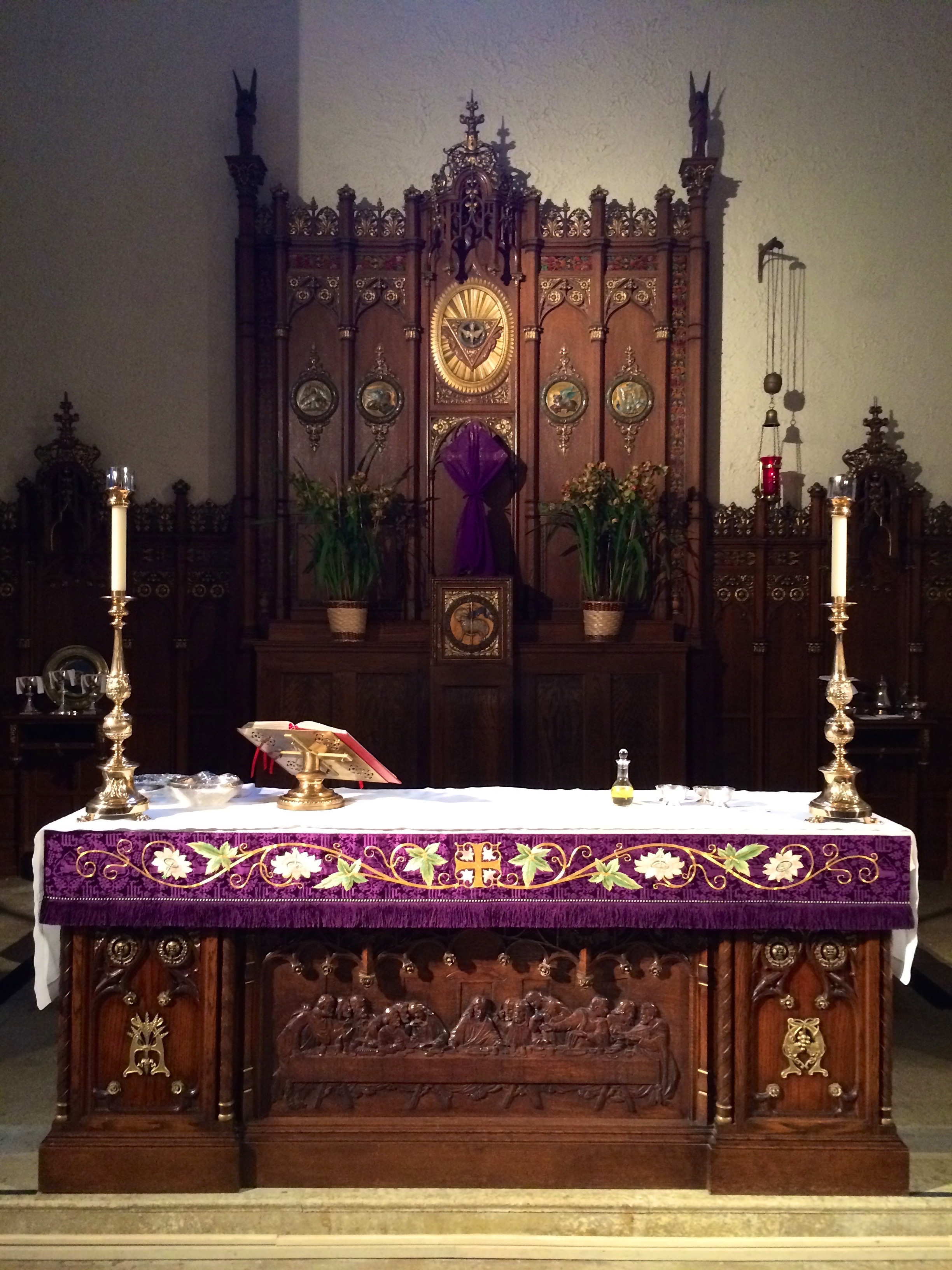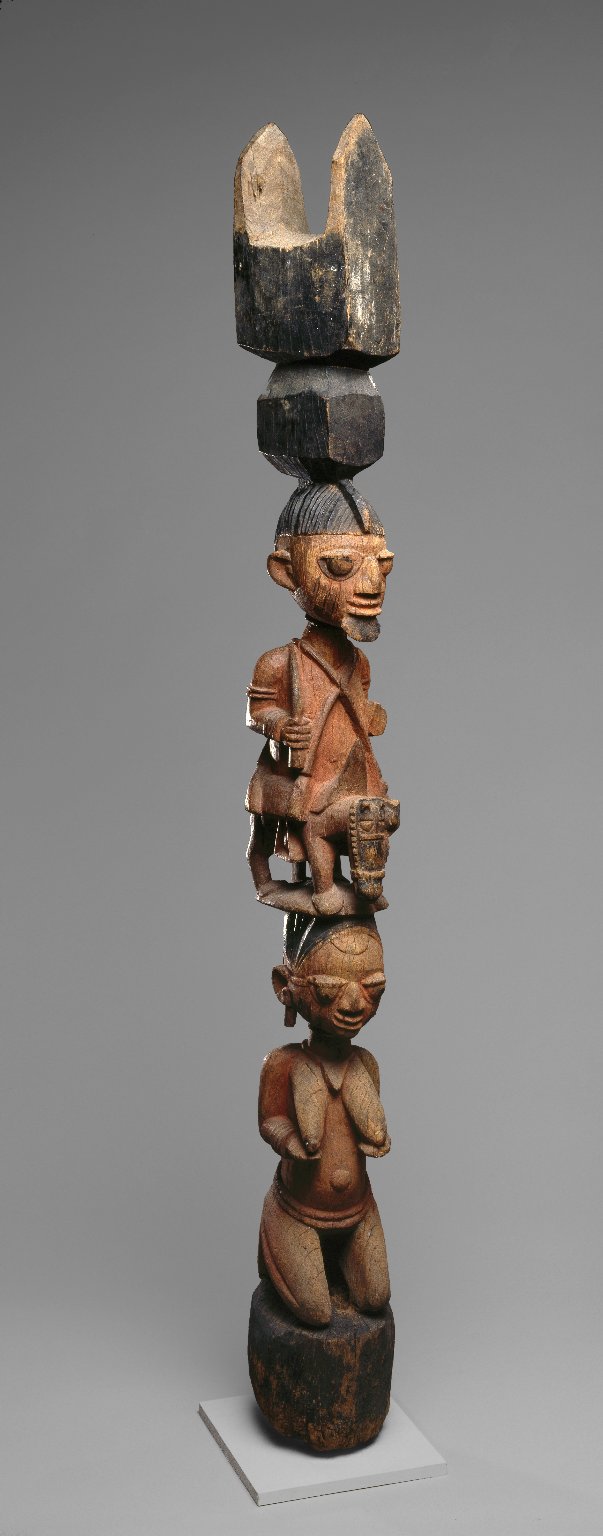|
Axé (music)
Axé () is a popular music genre that originated in Salvador, Bahia, Brazil in the 1980s, fusing different Afro-Caribbean genres, such as marcha, reggae, and calypso. It also includes influences of Brazilian music such as frevo, forró and carixada. The word Axé comes from the Yoruba term '' àṣẹ'', meaning "soul, light, spirit or good vibrations". Axé is present in the Candomblé religion, as "the imagined spiritual power and energy bestowed upon practitioners by the pantheon of orixás". It also has ties with the Roman Catholic Church and the Lenten season, which represents the roots of Bahian Carnival. Roots and history Numerous different African cultures were brought to Brazil due to slavery, which lead to the creation of the vibrancy and complexity of Brazil and its culture. Therefore, several of Brazil's popular music styles have derived from African cultures and African diasporic influences, including samba, lambada, funk and axé. There is a tendency by Brazi ... [...More Info...] [...Related Items...] OR: [Wikipedia] [Google] [Baidu] |
Samba-reggae
Samba-reggae is a music genre from Bahia, Brazil. Samba reggae, as its name suggests, was originally derived as a blend of Brazilian samba with Jamaican reggae as typified by Bob Marley. History and background Samba-reggae arose in the context of the black pride movement that occurred in the city of Salvador de Bahia, around the 69, and it still carries connotations of ethnic identity and pride for Afro-Brazilians today. Bahia's population has a large proportion of dark-skinned Brazilians who are descendants of African slaves who were brought to Brazil by the Portuguese in the 17th and 18th centuries. These Afro-Brazilians played a major role in the early development of samba, which first took form in a Bahian style of dance and music called "samba de roda", probably in the late 19th century. Samba de roda was brought to Rio de Janeiro by Bahians around 1900, where it was combined with harmonic and rhythmic elements from European influences (such as chorinho and military marches). ... [...More Info...] [...Related Items...] OR: [Wikipedia] [Google] [Baidu] |
Afro-Caribbean Music
Afro-Caribbean music is a broad term for music styles originating in the Caribbean from the African diaspora. These types of music usually have West African/Central African influence because of the presence and history of African people and their descendants living in the Caribbean, as a result of the trans-Atlantic slave trade. These distinctive musical art forms came about from the cultural mingling of African, Indigenous, and European inhabitants. Characteristically, Afro-Caribbean music incorporates components, instruments and influences from a variety of African cultures, as well as Indigenous and European cultures. Afro-Caribbean music has been influenced by historical and stylistic influences. Historically, Afro-Caribbean music was influenced by the transatlantic slave trade and later, by the resistance and emancipation of slaves. Stylistically, afro-Caribbean music has been influenced by various African, European and Indigenous Latin American influences. African influenc ... [...More Info...] [...Related Items...] OR: [Wikipedia] [Google] [Baidu] |
Daniela Mercury
Daniela Mercury (born Daniela Mercuri de Almeida on July 28, 1965) is a Brazilian singer, songwriter, dancer, and producer. In her solo career, Mercury has sold over 11 million records worldwide, and had 24 Top 10 singles in the country, with 14 of them reached No. 1. Winner of a Latin Grammy for her album '' Balé Mulato – Ao Vivo'', she also received six Brazilian Music Award, an APCA award, three Multishow Brazilian Music Awards and two awards at VMB: Best Music Video and Photography. In 1991, Mercury released her self-titled album, which was followed by '' O Canto da Cidade'' a year later, boosting her career as a national artist and taking the axé music to the evidence. Over the years, Mercury released several albums, generating great singles like " Swing da Cor", " O Canto da Cidade", " À Primeira Vista", "Rapunzel", " Nobre Vagabundo", " Ilê Pérola Negra", " Mutante", " Maimbê Dandá", " Levada Brasileira", " Oyá Por Nós", among others. She recorded a commem ... [...More Info...] [...Related Items...] OR: [Wikipedia] [Google] [Baidu] |
Sergio Mendes
Sergio may refer to: * Sergio (name), for people with the given name Sergio * Sergio (carbonado), the largest rough diamond ever found * Sergio, the mascot for the Old Orchard Beach Surge Old or OLD may refer to: Places *Old, Baranya, Hungary *Old, Northamptonshire, England * Old Street station, a railway and tube station in London (station code OLD) *OLD, IATA code for Old Town Municipal Airport and Seaplane Base, Old Town, M ... baseball team * ''Sergio'', a 2009 documentary film about United Nations diplomat Sérgio Vieira de Mello * ''Sergio'', a 2020 biographical drama film about United Nations diplomat Sérgio Vieira de Mello See also * Hurricane Sergio (other) {{disambiguation ... [...More Info...] [...Related Items...] OR: [Wikipedia] [Google] [Baidu] |
Caetano Veloso
Caetano Emanuel Viana Teles Veloso (; born 7 August 1942) is a Brazilian composer, singer, guitarist, writer, and political activist. Veloso first became known for his participation in the Brazilian musical movement Tropicália, which encompassed theatre, poetry and music in the 1960s, at the beginning of the Military dictatorship in Brazil, Brazilian military dictatorship that 1964 Brazilian coup d'état, took power in 1964. He has remained a constant creative influence and best-selling performing artist and composer ever since. Veloso has won nineteen Brazilian Music Awards, nine Latin Grammy Awards and two Grammy Awards. On 14 November, Latin Grammy Awards of 2012, 2012, Veloso was honored as the Latin Recording Academy Person of the Year. Veloso was one of seven children born into the family of José Telles Veloso (commonly known as ''Seu Zeca''), a government official, and Dona Canô, Claudionor Viana Telles Veloso (known as ''Dona Canô''). He was born in the city of Sant ... [...More Info...] [...Related Items...] OR: [Wikipedia] [Google] [Baidu] |
Vinicius De Moraes
Marcus Vinícius da Cruz e Mello Moraes (19 October 1913 – 9 July 1980), better known as Vinícius de Moraes () and nicknamed "O Poetinha" ("The Little Poet"), was a Brazilian poet, diplomat, lyricist, essayist, musician, singer, and playwright. With his frequent and diverse musical partners, including Antônio Carlos Jobim, his lyrics and compositions were instrumental in the birth and introduction to the world of bossa nova music. He recorded numerous albums, many in collaboration with noted artists, and also served as a successful Brazilian career diplomat. Early life Moraes was born in Gávea, a neighbourhood of Rio de Janeiro, to Clodoaldo da Silva Pereira Moraes, a public servant, and Lidia Cruz, a housewife and amateur pianist. In 1916, his family moved to Botafogo, where he attended Afrânio Peixoto Primary School. Fleeing the Copacabana Fort revolt, his parents moved to Governador Island while Moraes remained at his grandfather's home in Botafogo to finish sch ... [...More Info...] [...Related Items...] OR: [Wikipedia] [Google] [Baidu] |
Gilberto Gil
Gilberto Passos Gil Moreira (; born 26 June 1942), is a Brazilian singer-songwriter and politician, known for both his musical innovation and political activism. From 2003 to 2008, he served as Brazil's Ministry of Culture (Brazil), Minister of Culture in the administration of President Luiz Inácio Lula da Silva. Gil's musical style incorporates an eclectic range of influences, including rock, Music of Brazil, Brazilian genres including samba, Music of Africa, African music, and reggae. Gil started to play music as a child and was a teenager when he joined his first band. He began his career as a bossa nova musician and grew to write songs that reflected a focus on political awareness and social activism. He was a key figure in the música popular brasileira and Tropicalismo, tropicália movements of the 1960s, alongside artists such as longtime collaborator Caetano Veloso. The History of Brazil (1964–1985), Brazilian military regime that 1964 Brazilian coup d'état, took pow ... [...More Info...] [...Related Items...] OR: [Wikipedia] [Google] [Baidu] |
Bahian Carnival
Bahian Carnival () is the annual carnival festival celebrated in the Brazilian state of Bahia, mainly in its capital, Salvador. The event officially lasts for six days, beginning on the Thursday before Ash Wednesday and concluding on Ash Wednesday at noon. The term may also be used to comprise related events that happen immediately before or after, extending the duration for up to twelve days. The festival happens simultaneously in many sites, the most famous being the ''Campo Grande'' track in the upper part of the city, the ''Barra-Ondina track'' by the shore, and Pelourinho (a historical neighborhood). It features performances by several music groups. The most traditional presentations are the trio elétrico parades and Afro blocks presentations. It is estimated that approximately 2.5 million people (including 1.5 million tourists) participate in the festivities every year. Economic reports show that the festival has a large impact at Salvador’s local economy. History In ... [...More Info...] [...Related Items...] OR: [Wikipedia] [Google] [Baidu] |
Lenten
Lent (, 'Fortieth') is the solemn Christian religious observance in the liturgical year in preparation for Easter. It echoes the 40 days Jesus spent fasting in the desert and enduring temptation by Satan, according to the Gospels of Matthew, Mark and Luke, before beginning his public ministry. Lent is usually observed in the Catholic, Lutheran, Moravian, Anglican, United Protestant and Orthodox Christian traditions, among others. A number of Anabaptist, Baptist, Methodist, Reformed (including certain Continental Reformed, Presbyterian and Congregationalist churches), and nondenominational Christian churches also observe Lent, although many churches in these traditions do not. Which days are enumerated as being part of Lent differs between denominations (see below), although in all of them Lent is described as lasting for a total duration of 40 days, the number of days Jesus, as well as Moses and Elijah, went without food in their respective fasts. In Lent-observ ... [...More Info...] [...Related Items...] OR: [Wikipedia] [Google] [Baidu] |
Roman Catholic Church
The Catholic Church (), also known as the Roman Catholic Church, is the List of Christian denominations by number of members, largest Christian church, with 1.27 to 1.41 billion baptized Catholics Catholic Church by country, worldwide as of 2025. It is among the world's oldest and largest international institutions and has played a prominent role in the history and development of Western civilization.Gerald O'Collins, O'Collins, p. v (preface). The church consists of 24 Catholic particular churches and liturgical rites#Churches, ''sui iuris'' (autonomous) churches, including the Latin Church and 23 Eastern Catholic Churches, which comprise almost 3,500 dioceses and Eparchy, eparchies List of Catholic dioceses (structured view), around the world, each overseen by one or more Bishops in the Catholic Church, bishops. The pope, who is the bishop of Rome, is the Papal supremacy, chief pastor of the church. The core beliefs of Catholicism are found in the Nicene Creed. The ... [...More Info...] [...Related Items...] OR: [Wikipedia] [Google] [Baidu] |
Candomblé
Candomblé () is an African diaspora religions, African diasporic religion that developed in Brazil during the 19th century. It arose through a process of syncretism between several of the traditional religions of West and Central Africa, especially those of Yoruba religion, the Yoruba, Bantu mythology, Bantu, and Gbe languages, Gbe, coupled with influences from Roman Catholicism. There is no central authority in control of Candomblé, which is organized around autonomous ''terreiros'' (houses). Candomblé venerates spirits, known varyingly as ''Orisha, orixás'', ''inkice'', or ''vodun'', which are deemed subservient to a transcendent creator god, Olorun, Oludumaré. Deriving their names and attributes from traditional West African deities, the ''orixás'' are linked with Roman Catholic saints. Each individual is believed to have a tutelary ''orixá'' who has been connected to them since before birth and who informs their personality. An initiatory tradition, Candomblé's member ... [...More Info...] [...Related Items...] OR: [Wikipedia] [Google] [Baidu] |
Aṣẹ
Aṣẹ, àṣẹ, aṣe, ase, or ashe is a Yoruba philosophy that is defined to represent the power that makes things happen and produces change in the Yoruba religion. It is believed to be given by Olódùmarè to everything — gods, ancestors, spirits, humans, animals, plants, rocks, rivers, and voiced words such as songs, prayers, praises, curses, or even everyday conversation. Existence, according to Yoruba thought, is dependent upon it. In addition to its sacred characteristics, ''àṣẹ '' also has important social ramifications, reflected in its translation as "power, authority, command." A person who, through training, experience, and initiation, learns how to use the essential life force of things to willfully effect change is called an . Rituals to invoke divine forces reflect this same concern for the autonomous ''ase'' of particular entities. The recognition of the uniqueness and autonomy of the ''ase'' of persons and gods is what structures society and its rela ... [...More Info...] [...Related Items...] OR: [Wikipedia] [Google] [Baidu] |







